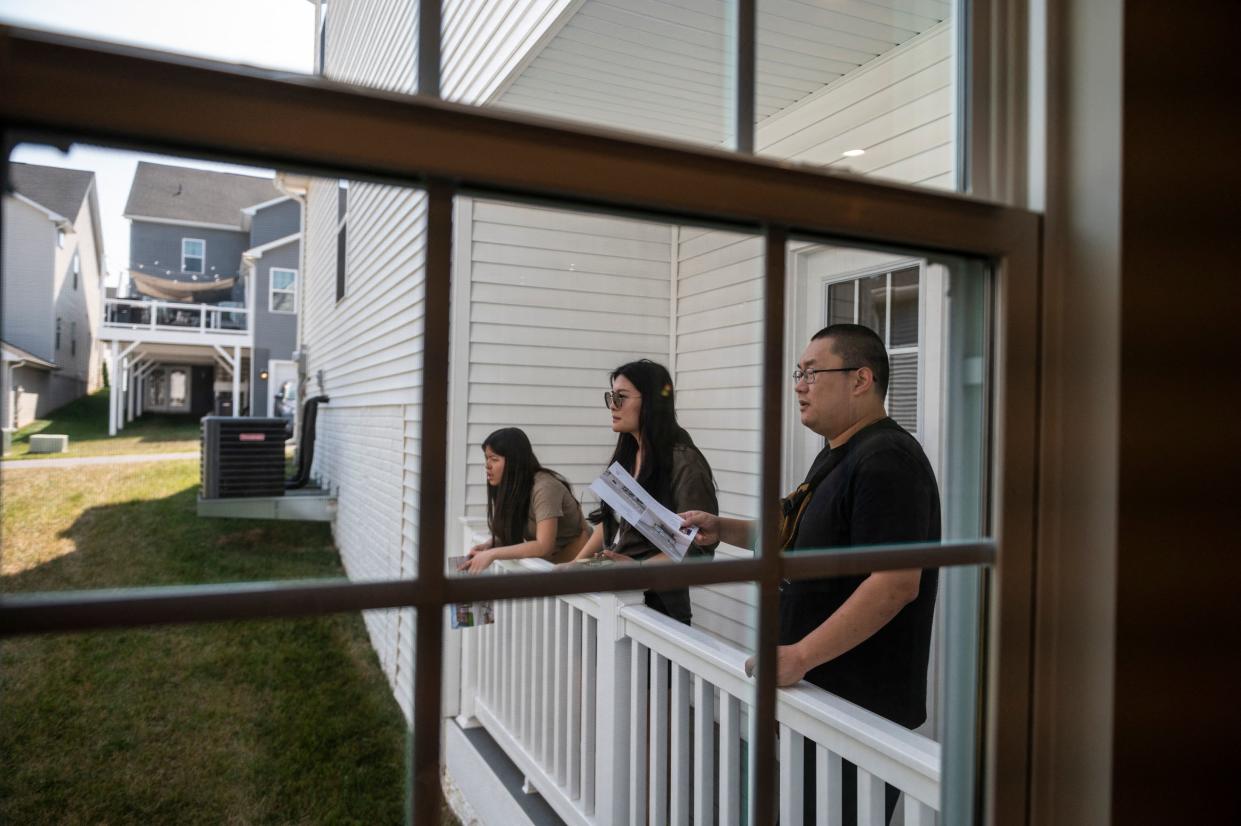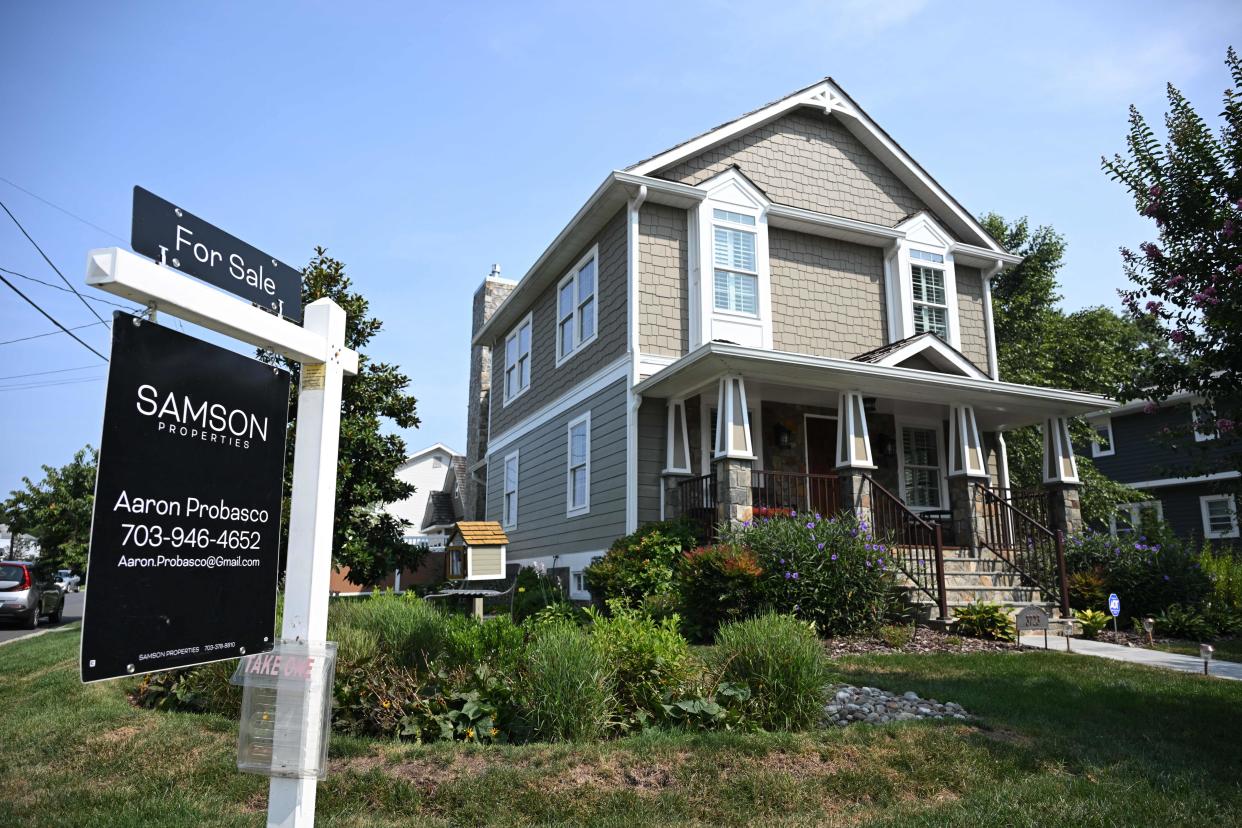Pinched homebuyers turn to adjustable-rate mortgages to make the payment math work
More homebuyers are turning to adjustable-rate mortgages, or ARMs, as the rate on the most popular fixed-rate home loan remains at 23-year highs.
The volume of ARM applications jumped 15% last week from the previous one, the Mortgage Bankers Association (MBA) reported Wednesday. That brought the ARM share of all applications to 9.2%, the highest since November 2022 when mortgage rates topped 7%.
The uptick reflects how buyers still in the market are turning to other options that provide a lower interest rate — even if slightly riskier — to combat housing's intractable affordability challenges.
"With fixed mortgage rates as high as they are, it's even more important to consider other loan options and weigh them against your potential time frame," Keith Gumbinger, vice president of HSH.com, a mortgage data resource provider, told Yahoo Finance. "An ARM may afford you all the fixed-rate mortgage you actually need, and at a lower cost than a loan that is fully fixed for its entire term."
Read more: How to buy a house in 2023

The rate on a 5/1 ARM decreased to 6.33% last week from 6.49% the previous week for buyers who put 20% down. The mortgage features a fixed rate for the first five years and then it adjusts higher or lower every year after, following a preset interest rate index.
By contrast, the rate on the 30-year fixed mortgage — by far the most common purchase loan that features a fixed rate for the duration of the loan — increased to 7.67% from 7.53% with the same down payment, according to MBA. (Yahoo Finance reports Freddie Mac's average weekly mortgage rates, which come out on Thursdays and are slightly different than the MBA's.)
Read more: Mortgage rates at 20-year high: Is 2023 a good time to buy a house?
On a $400,000 home purchase with $80,000 down, the initial monthly ARM payment would be almost $300 lower than the payment on the 30-year mortgage, based on MBA's averages — $1,987 versus $2,275. Over the first five years, that adds up to $18,000 in savings.
That's a good chunk of change.
But the ARM carries risk. The rate could increase after five years, making the monthly payment less attractive. Many bet on refinancing before that happens.
These also aren't the kind of ARMs that toppled the housing market in the run-up to the Great Recession. Lending standards are stricter — and there are caps on how much the rate can jump in a year. And despite any remaining risks from today's ARM, the 1.34-point difference between its rate and the 30-year appears too compelling for some buyers.

Meanwhile, the reason ARM pricing has improved lately is because "the yield curve has become less inverted in recent weeks," Joel Kan, MBA’s deputy chief economist, said in a statement.
Typically, loans with longer maturities — like the 30-year mortgage — come with higher interest rates because it's riskier for investors to buy and hold securities backed by those loans for such a long time horizon. But if the yield curve inverts, that relationship changes and rates on shorter-term loans are higher than rates on longer-term ones.
Last week, the yield on the 10-year Treasury — which the 30-year mortgage rate tracks — surged to its highest point in 16 years after robust economic indicators fanned fears that the Federal Reserve may raise its benchmark rate again. The 30-year mortgage rate followed.
For the last eight weeks, the rate on the 30-year mortgage has topped 7%, a streak that hasn't occurred since the last two months of 2000. Many experts expect the rate to hit 8% by the end of the year. All of that has chilled mortgage demand.
While applications for mortgages to purchase edged up 1% last week from the previous one — thanks to the new interest in ARMs — the volume is still nearly 20% off last year's pace, the MBA found.
But it's not just mortgage rates that are creating affordability barriers. Home prices remain resilient, recently hitting new highs.
That's largely because inventory remains scarce, especially on the resale market. Unless homeowners must sell for a job relocation or divorce, many are reluctant to put their properties on the market. Why? They don't want to trade in their current low mortgage rate for today's much uglier one.
Yahoo Finance Reporter Rebecca Chen contributed to this report.
Janna Herron is the personal finance and real estate editor for Yahoo Finance. Follow her on Twitter @JannaHerron.
